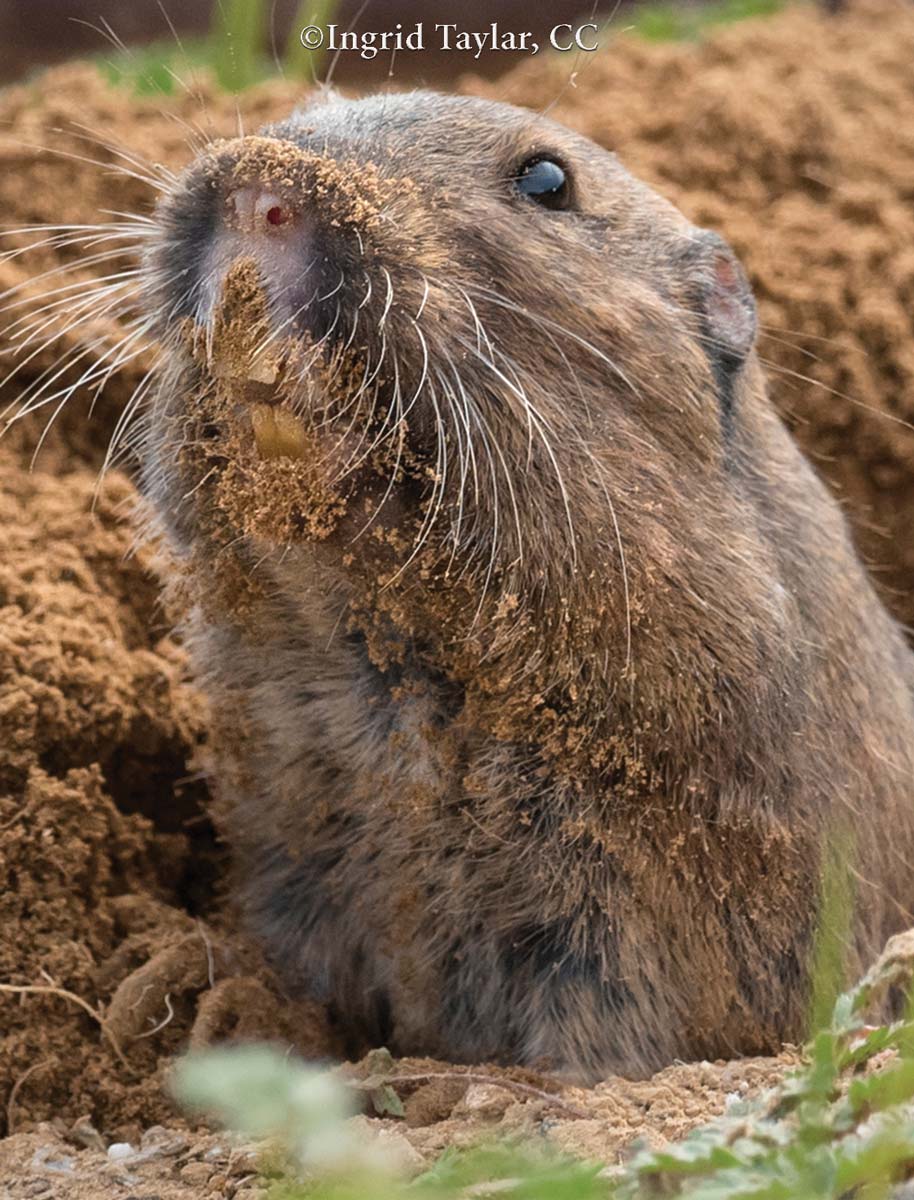
If you see a plant wiggle, then disappear below ground, or if you notice a fan-shaped mound of soil blocked with a plug of earth, you know a gopher or pocket gopher is at work. Primarily found west of the Mississippi, these little rodents can ravage gardens. The animals are brown-furred and 6 to 12 inches long, with small eyes and ears, long claws, and teeth that grow up to 14 inches a year (gnawing keeps them worn down to a reasonable length), The pocket of the name refers to the fur-lined external cheek pouches used for carrying food.
Except when mating or bringing up young (offspring are driven out at 2 months of age), gophers live alone in tunnel systems occupying up to 2,000 square feet. Runways near the surface are for gathering food; deeper ones are for sleeping, storing food, and raising young. Lateral passages that rise to ground level at a 45-degree angle are disposal chutes for shunting excavated soil to the surface. A single garden may contain several intertwining tunnel systems. Your troubles aren’t always over when you get rid of one pesky gopher, since another may move right into the original pest’s tunnels.
Roots, bulbs, tubers, seeds, and grasses.
Damage:Plants disappear or their roots are eaten. Young trees may be girdled and killed. Mounds cover plants and ruin lawns.
Control:Barriers, trapping, repellants, gasses.
Notes:For additional protection, line planting holes or beds within one half inch diameter galvanized wire mesh.
Ineffective controls include flooding, chewing gum placed in the tunnels, noisemakers, and “gopher plants’’ (Euphoria lathyris)


